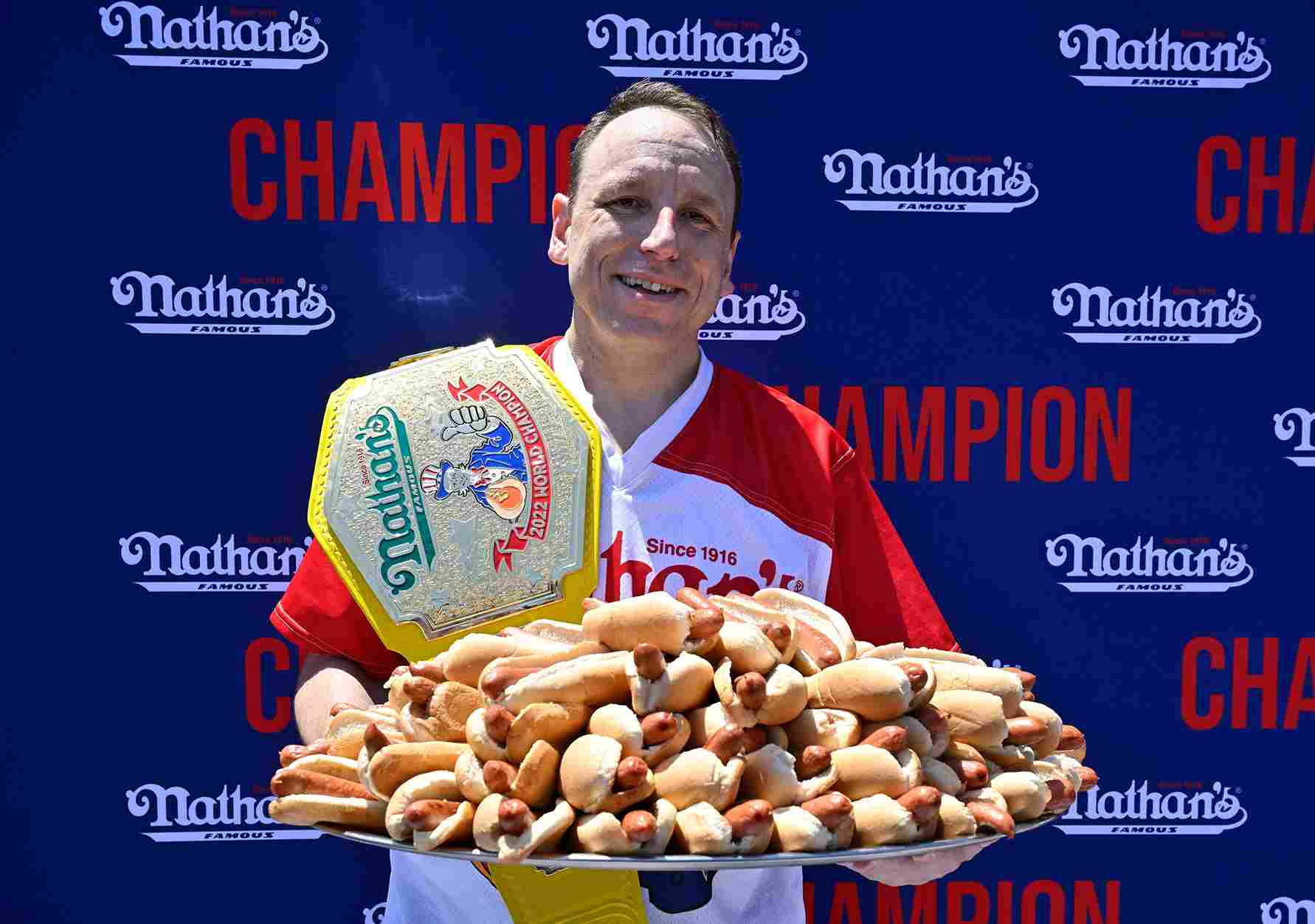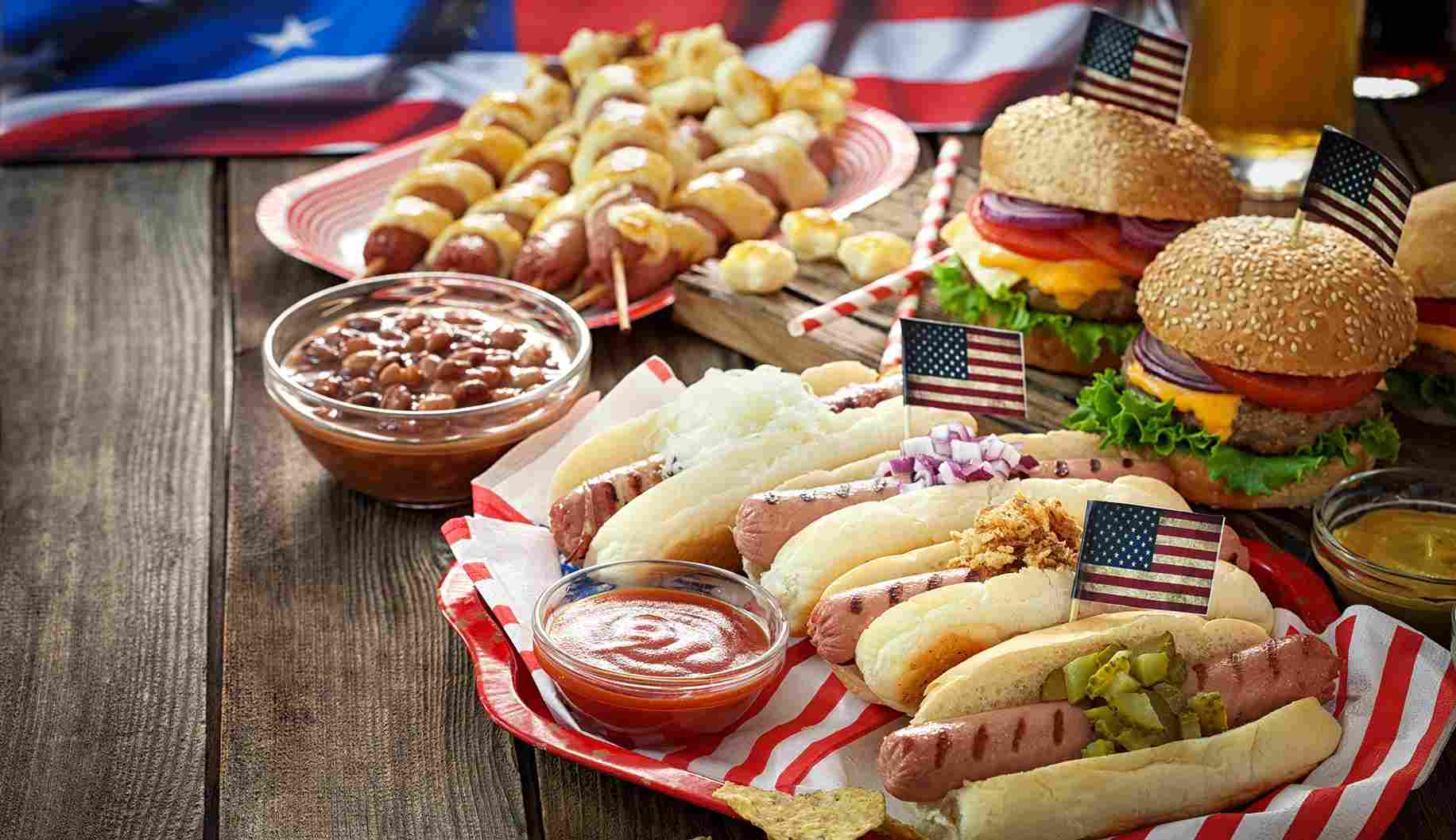12 Mind-blowing Facts About The Fourth Of July
The Fourth of July: a day filled with backyard barbecues, dazzling fireworks, and patriotic celebrations. With over 200 years of history and tradition, there’s more to America’s Independence Day than meets the eye.
While most of us enjoy the holiday with hot dogs, hamburgers, and festive outfits, there are plenty of intriguing facts that often go unnoticed.
From the signing of the Declaration of Independence to the staggering number of hot dogs consumed, these lesser-known facts will enhance your holiday knowledge.
Whether you’re sunbathing, sipping a drink, or watching fireworks, these surprises will make you the star of any Fourth of July gathering. Here’s a collection of captivating facts about the Fourth of July that will surprise you.
1. The Declaration of Independence wasn’t actually signed on July 4th or even during July.

The name and date of the Fourth of July are two of the biggest myths surrounding it. Many believe that America declared its independence from Britain on July 4, 1776.
However, the official vote for independence actually took place two days earlier, on July 2. The “Declaration” was published in newspapers on July 4, which led to the common association.
It’s now generally accepted that the Declaration of Independence wasn’t signed on the Fourth of July. That date marked when the document was formally dated, finalized, and adopted by the Continental Congress.
The official vote for independence occurred on July 2, a day John Adams originally thought should be celebrated.
2. Early Fourth of July celebrations closely resembled those of today.

The first Fourth of July celebrations were very similar to today’s. In 1776, after hearing the Declaration of Independence, colonists erupted in joy.
In Manhattan, soldiers and citizens tore down a statue of King George III and melted it into bullets. In Philadelphia, they used the king’s coat of arms to start a bonfire, and in Savannah, Georgia, people burned the king in effigy and held a mock funeral.
By 1777, Independence Day celebrations became more recognizable. The Virginia Gazette on July 18, 1777, described Philadelphia’s July 4th events:
“The evening was closed with the ringing of bells, and at night there was a grand exhibition of fireworks, which began and concluded with thirteen rockets on the commons, and the city was beautifully illuminated. Every thing was conducted with the greatest order and decorum, and the face of joy and gladness was universal.”
Ships decorated in patriotic colors lined the harbors, and streamers filled the streets. Modern Independence Day celebrations have kept many of these traditions alive since 1777.
3. Eating salmon on the Fourth of July is a long-standing tradition in New England.

Legend says John Adams and his wife ate turtle soup, poached salmon with egg sauce, green peas, and potatoes on July 4, 1776.
The tradition of eating salmon on the Fourth of July began in New England by chance. In the middle of summer, salmon was plentiful in the region’s rivers, making it a common meal. Over time, this dish became part of the Fourth of July celebrations, even as Atlantic salmon numbers declined.
To serve salmon the traditional New England way, pair it with green peas. For an authentic 18th-century experience, you can also enjoy turtle soup, as John and Abigail Adams reportedly did on the first Fourth of July. However, you can still celebrate without the soup.
4. Massachusetts was the first state to officially recognize the Fourth of July.

Massachusetts was the pioneer, officially recognizing the Fourth of July as a holiday on July 3, 1781. It was the first state to do so.
Federal holidays didn’t come into play until June 28, 1870, when Congress declared New Year’s Day, Independence Day, Thanksgiving, and Christmas as holidays for federal workers.
At first, the Fourth of July holiday applied only within the District of Columbia. It required additional legislation over the years to extend this holiday to all federal employees across the country.
5. The oldest continuous Fourth of July celebration takes place in Bristol, Rhode Island.

Bristol, Rhode Island, hosts the nation’s oldest Fourth of July parade, dating back to 1785. The town’s Independence Day celebrations have grown significantly since then.
Historian Richard V. Simpson noted that the first celebration in 1785 was a small event with fewer than two dozen people.
Now, the festivities begin on Flag Day, June 14, and continue through to the 2.5-mile parade on July 4. Originally, the event was a simple church service but has since evolved into parades, live music, food, and various activities.
The celebration now includes a Miss and Little Miss Fourth of July pageant. Although the 2020 events were canceled due to COVID-19, they returned this year with a large concert series leading up to the holiday weekend. In 2024, Bristol will mark its 239th anniversary of this historic celebration.
6. The shortest Fourth of July parade happens in Aptos, California.

The shortest Fourth of July parade takes place in Aptos, California. This parade is just over half a mile long, covering two city blocks at 0.6 miles.
Despite its short length, the parade includes antique cars, decorated trucks, and many walkers, making it a unique and charming celebration of patriotism.
7. Approximately 15,000 fireworks displays occur every Independence Day.

Around 15,000 fireworks displays light up the sky for the Fourth of July, as projected by the American Pyrotechnics Association in 2017. These displays vary in timing, not all happening on July 4 itself.
Costs range widely, with small towns typically spending $8,000 to $15,000, while major cities like Boston may exceed $2 million for spectacles like the Boston Pops Fireworks Spectacular.
Americans collectively spend over $1 billion annually on fireworks, with only 10% of displays handled professionally. Unfortunately, this results in approximately 12,900 firework-related visits to the emergency room each year, with nearly 70% of these incidents involving men, according to Fortune Magazine.
Interestingly, the first documented fireworks display for the Fourth of July occurred in 1777, just a year after the United States declared independence from Britain. In 1884, miners in Swan City, Colorado, lacking fireworks, decided to blow up the post office in a rather unconventional celebration.
8. Americans consume an enormous amount of hot dogs on the Fourth of July.

According to the National Sausage and Hot Dog Council (NHDSC), Americans are expected to devour 150 million hot dogs during the July 4th holiday alone. This is part of an estimated 7 billion hot dogs consumed from Memorial Day to Labor Day.
To put this in perspective, many hot dogs could stretch from Washington, D.C., to Los Angeles more than five times.
Speaking of hot dogs, the Nathan’s Hot Dog Eating Contest has been a July 4th tradition since it began on Coney Island in New York in 1916. Legend has it that four immigrants competed to prove their patriotism by eating the most hot dogs.
Joey Chestnut set a record in 2018 by devouring 74 franks, breaking his own record. He won the competition for the eleventh time that year, and in 2019, he ate 71 wieners. In 2020, he set another new record by eating 76 wieners.
9. Billions are spent by Americans on food for Fourth of July festivities.

Americans spend nearly $100 million on chips for Independence Day celebrations.
In 2023, the National Retail Federation estimated Americans would splurge approximately $9.5 billion on delicious treats to mark the Fourth of July. This covers food and cookout expenses, averaging about $93 per person enjoying a barbecue or picnic.
Then there’s the alcohol. According to the Beer Institute, more beer is sold around the Fourth of July than at any other time of the year. Americans typically shell out around $1 billion on beer and over $560 million on wine for their Fourth of July festivities.
10. Three presidents died on the Fourth of July, and one was born on this day.

Thomas Jefferson and John Adams both passed away on July 4, 1826, exactly 50 years after the Declaration of Independence was adopted. Adams’ final words were reportedly, “Thomas Jefferson still survives,” unaware that Jefferson had died just hours earlier.
James Monroe, the nation’s fifth president, also died on July 4, 1831, adding to the curious history of this date.
Despite these losses, Independence Day has also marked a birth in presidential history. Calvin Coolidge, the 30th president of the United States, was born on July 4, 1872.
11. Only two men signed the Declaration of Independence on July 4, 1776

On July 4, 1776, Charles Thomson and the famous John Hancock were the only two who signed the Declaration of Independence. Over the next month, the other 54 delegates added their signatures.
John Hancock and Charles Thomson signed early copies of the Declaration for military officers and political committees. The rest signed the official version on August 2, with some signing later. Hancock boldly signed his name again on the updated version.
12. The United States isn’t the only country that celebrates the 4th of July.

July 4 is significant beyond the United States. The Philippines, for example, celebrates its independence from the U.S., declared through the Treaty of Manila on July 4, 1946.
Denmark, England, Norway, Portugal, and Sweden also mark this day. Denmark and Norway have ties through citizens who migrated to the U.S. in the early 1900s, linking them to American culture.
In England, Portugal, and Sweden, celebrations often occur near American military bases or tourist destinations popular with Americans.

